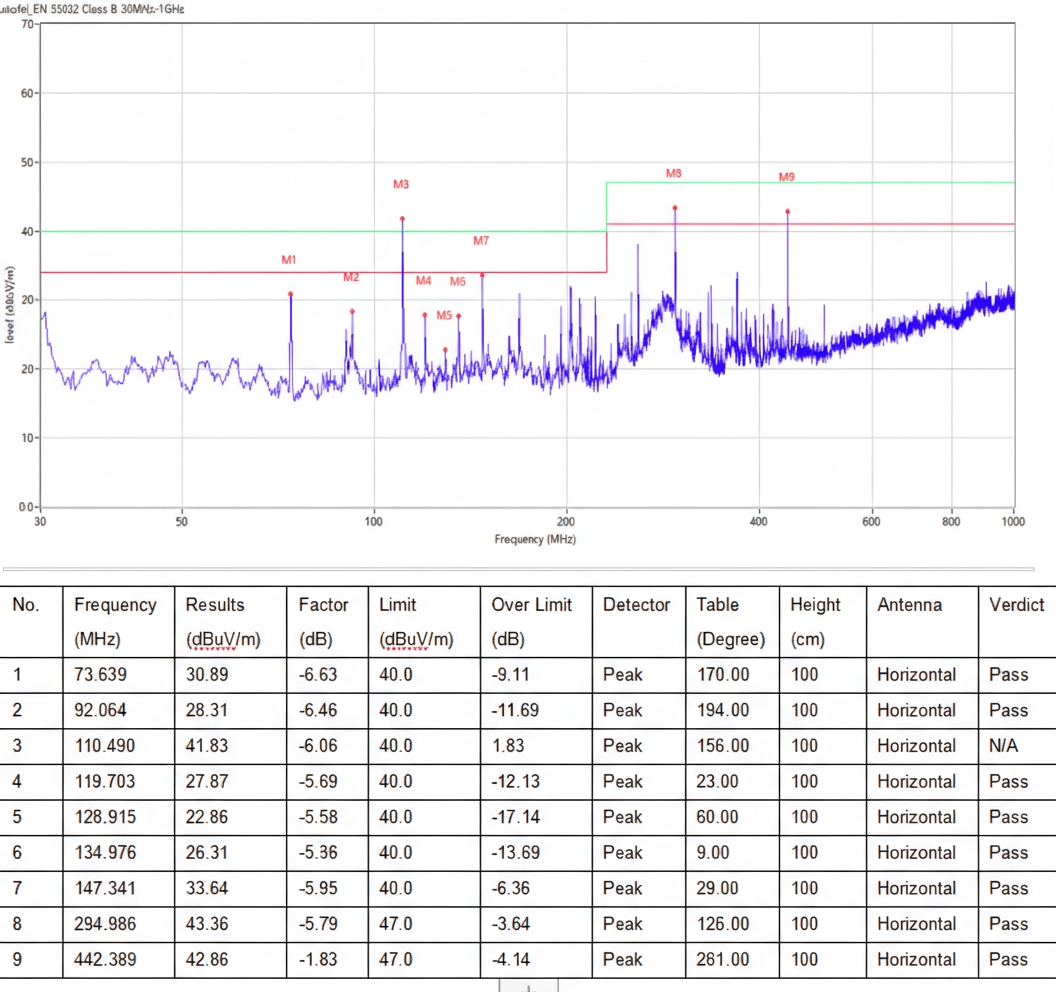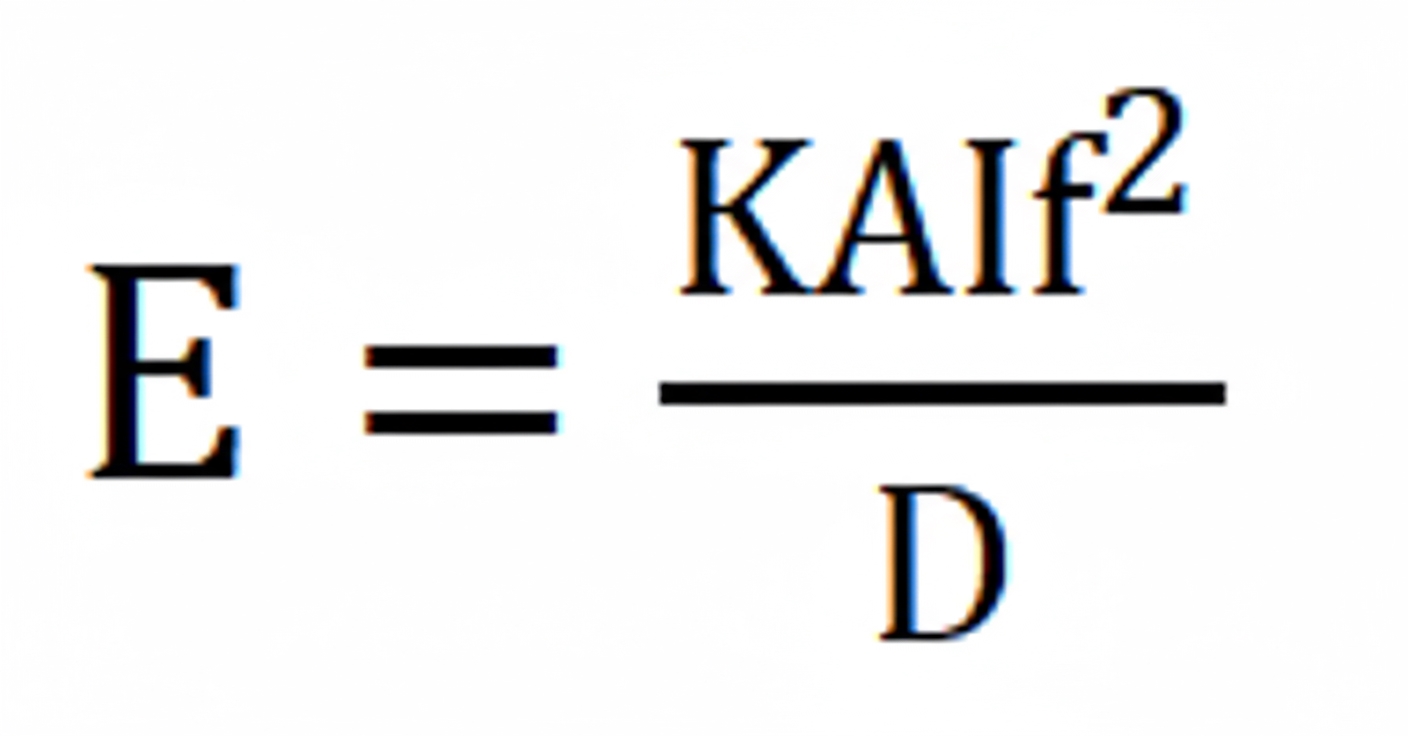Introduction
With rapid advances in technology and intelligent devices, more electronic products are appearing, and electromagnetic radiation issues are becoming more common. Electromagnetic pollution is often considered a major environmental concern after air, water, and noise pollution. Complex electromagnetic environments can cause interference between electronic products and, in severe cases, affect quality of life and health. Clock-related emissions are among the most common radiated failures in RE testing. How to resolve clock radiation exceedances is a frequent concern for R&D and hardware engineers. This article discusses a clock-related issue encountered during remediation and shares practical observations.
Case Study
The device in this case is an aftermarket navigation unit tested to the EN55032 Class B standard. Laboratory pre-compliance testing identified radiated emissions exceeding limits, attributed to the clock. The measurement results are shown below.

Horizontal measurements on antennas M1, M3, M7, M8, and M9 showed clear exceedances. Vertical measurements had exceedance points at essentially the same frequency, suggesting harmonics around 37 MHz. Through a process of elimination using a spectrum analyzer and by disconnecting module clocks, the interference source was identified as a 12.768 MHz I2S clock.
Remediation Process
EMC remediation is typically approached from three perspectives: source - coupling path - victim (sensitive) device or circuit. Remediating at the source is generally the preferred first step because it directly addresses the origin of the problem and is often easier to locate. Coupling paths and victim devices are related to the source, so source mitigation is usually attempted first.
After identifying the I2S clock as the noise source, conventional capacitor filtering was tried but produced no noticeable improvement. The next approach was to "block" the noise at its source by reducing the noise current with series elements such as resistors, inductors, or ferrite beads. The governing relationship indicates that, all else equal, reducing current I lowers the emitted noise energy E.

On the clock trace, a 300 ohm ferrite bead was installed in place of the series resistor and retested. The results after adding the ferrite bead are shown below.
After adding the ferrite bead, the clock-related emissions dropped significantly, with the smallest margin improvement being about 5.5 dB and typical reductions ranging from 2 to 10 dB compared with the initial measurements.
Further Options
Besides common combinations of ferrite beads, capacitors, and inductors, another effective technique is clock spread-spectrum modulation. Spread-spectrum techniques are widely compatible and can be applied to both passive and active crystal oscillator solutions.

The image above shows successful cases of spread-spectrum applied in different designs.
Conclusion
Clock radiation exceedances are a common and sometimes challenging EMC issue. Understanding the three EMC elements and addressing the problem from multiple angles—particularly by mitigating the source—makes the remediation process much more manageable.
 ALLPCB
ALLPCB







